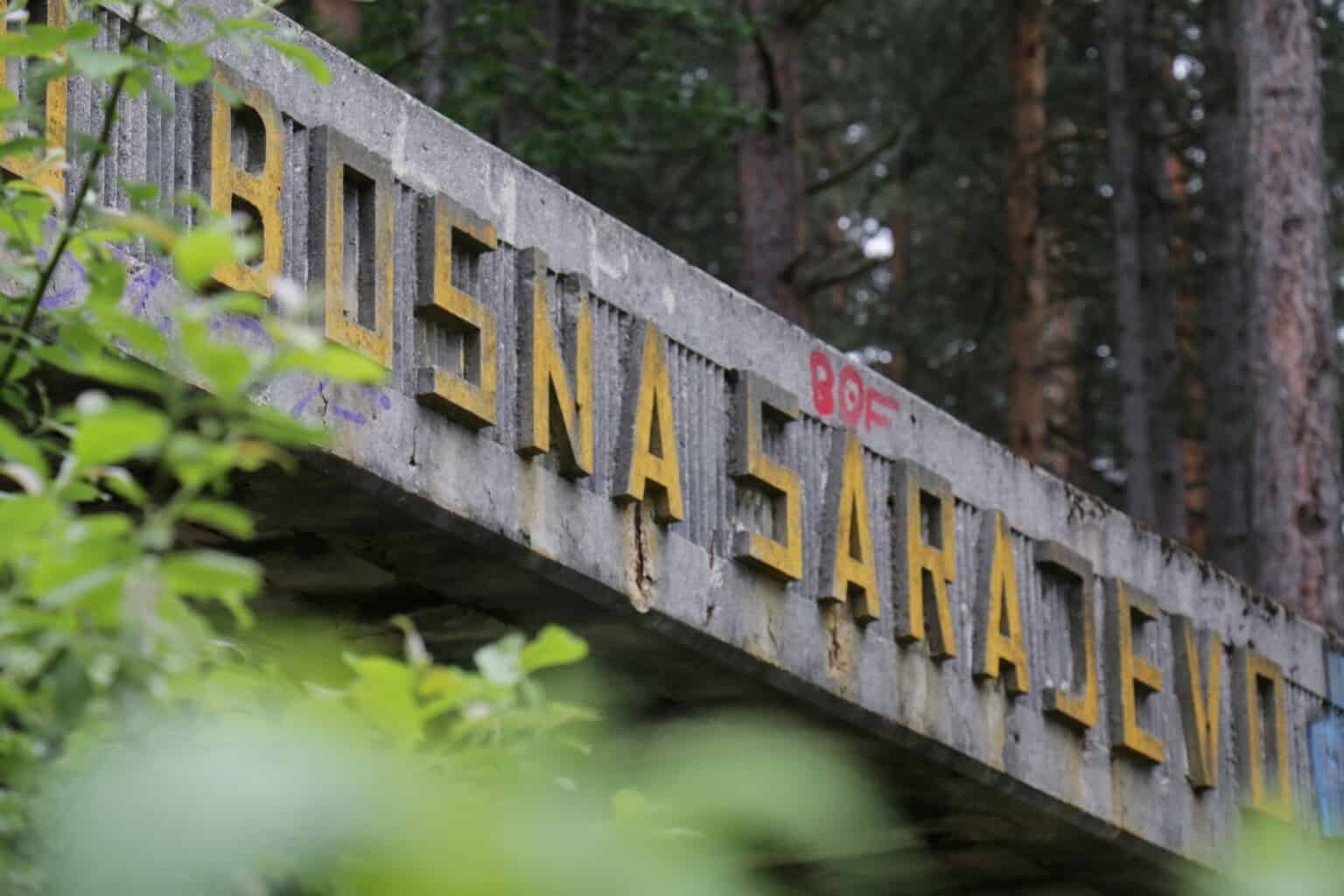
Thinking about your next travel spot? You might be wondering if Sarajevo, the capital city of Bosnia and Herzegovina, is a good pick. This city is often skipped by many travelers, but it has a lot to offer, believe me! This blog will answer one simple but important question: Is Sarajevo worth visiting?
Short answer: Sarajevo is worth visiting, it is a small but a hidden gem among the European capitals with a rich blend of history, culture, tasty food, and beautiful nature. Plus, it’s less packed with tourists and is easy on your wallet compared to other European capitals.
A Blend of History and Modern Life
Sarajevo is like a living history book and the city has been through a lot. The Ottomans conquered Bosnia in 1463, and Sarajevo became an important Balkan city within the Ottoman empire. After the defeat of Ottoman empire in the Russo-Turkish war, the Congress of Berlin in 1878 allowed Austria-Hungary to occupy Bosnia.
However, the city is perhaps most renowned for the assassination of Archduke Franz Ferdinand of Austria in 1918, an event that sparked World War I. The assassination was carried out by Serbian nationalist Gavrilo Princip and occurred on the Latin Bridge in Sarajevo.

After WWII, Sarajevo was part of socialist Yugoslavia under Josip Broz Tito. The city developed as an industrial center and also was a proud host og in the Winter Olympics in 1984.
The 400-plus years under Ottoman rule have clearly left a mark on Sarajevo. Islam is strong in Sarajevo and you’ll see a lot of mosques in the city. The way people enjoy coffee in Sarajevo is similar to how it’s done in Turkey. Buildings like the Baščaršija market and the Gazi Husrev-beg Mosque show Ottoman-style architecture. Also, don’t be surprised to see Turkish flags next to Bosnian ones in the city, showing the close ties between Turkey and Bosnia today, due to their shared history.

Following the break-up of Yugoslavia in the early 1990s, war broke out between the three ethnic groups in Bosnia (Serbs, Croats, and Bosniaks) due to territorial disputes. Sarajevo was besieged for nearly four years during the war. Thousands died, and the city was heavily damaged, many of the scars are still visible to this day.
Food Culture
The Ottoman influence on Bosnia and Sarajevo shows in the food culture too. If you love trying new foods, Sarajevo has lots to offer. You can start your day with Bosnian coffee, which is similar to Turkish coffee. For lunch, you can have ‘ćevapi’—small grilled meat rolls. Don’t forget to try ‘burek,’ a tasty pastry filled with meat, cheese, or spinach. Also, don’t forget to try some of their sweet dishes, many of which are Ottoman-inspired.
Is Sarajevo Expensive?
One big reason to visit Sarajevo is that it’s budget-friendly. Compared to many other European cities, you’ll find that your money goes a long way here. Overall, Bosnia is a cheap country to visit and Sarajevo is no exception. You can enjoy a good meal, go for some shopping, and stay at a nice hotel, all without spending too much. If you want to know how much you can expect to spend in Bosnia, I encourage you to check out my blog post about it.
Surroundings Of Sarajevo
Perhaps one of the most captivating aspects of Sarajevo is its one-of-a-kind geographical location. The city is set in a valley that forms a natural amphitheater, hugged tightly by the Dinaric Alps. As you enter the city, you’ll feel like you’re being embraced by the slopes of the surrounding hills. The Miljacka River cuts through the valley, adding a water element to this picturesque setting. Buildings, old and new, seem to climb the hillsides, offering a sense of being in a secluded space yet still very much in a vibrant city. The valley’s unique geography also creates a special climate for Sarajevo, mixing warm continental temperatures with the crisp air of mountainous regions.

Top Things To Do In Sarajevo
1.
Visit Baščaršija: Baščaršija is Sarajevo’s old bazaar and a key historical, cultural, and social point in the city. Here you can shop for traditional Bosnian crafts, eat local food like ćevapi, and visit historical sites like Sebilj Fountain.

2.
See Gazi Husrev-beg Mosque: Built in 1531 and one of the most important Islamic structures in Bosnia and Herzegovina. The mosque is named after Gazi Husrev-beg, who was a high-ranking official in the Ottoman Empire. “Gazi” is an honorary title meaning “warrior,” and “beg” is a title for a leader, in Turkish. The mosque was named to honor him and his contributions to Sarajevo. The mosque is a fine example of Ottoman architecture and is well worth a visit.
3.
Walk Through the Tunnel of Hope: The Tunnel of Hope in Sarajevo is an underground tunnel built during the Siege of Sarajevo in the 1990s. The city was cut off from the outside world, and the tunnel served as a lifeline for getting food, medicine, and other supplies in. It also allowed people to get out of the city. The tunnel ran under the airport runway and was about 800 meters long. Today, it’s a museum where you can learn about this period in Sarajevo’s history.
4.
Explore the Abandoned Bob-Sleigh Track: The bobsleigh track in Sarajevo, once a proud symbol of Yugoslavia’s successful Winter Olympics in 1984 and also the first Winter Olympics to be held in a Slavic-speaking country, now stands abandoned and left to decay. During the Bosnian War in the 90s, the track and its surroundings were used by military forces, resulting in damage to certain sections. Unfortunately, due to financial constraints, the track was never restored. Today the track serves as a sad reminder of the city’s former glory days.

5.
Go to the Yellow Fortress: Located on a cliff overlooking Sarajevo, the Yellow Fortress provides a panoramic view of Sarajevo. It’s a popular spot for watching sunsets and is near the historic Vratnik area. There is also a cafe here which gives you the opportunity to enjoy tea or a Bosnian coffee as you take in the city’s breathtaking sunset.
6.
Sarajevo Roses: You’ll find these concrete scars filled with red resin scattered around the city. They serve as a grim reminder of the bombings during the 1990s conflict and are a symbol of Sarajevo’s resilience.
7.
Try Bosnian Coffee: Bosnian coffee is similar to Turkish coffee and is a big part of local culture. Visit a local café to experience this strong, rich coffee served in a džezva (a special pot).
8.
Visit Vrelo Bosne: Just a short drive from Sarajevo, this park features springs, waterfalls, and beautiful greenery. It’s a great place for a picnic or a leisurely walk.
Safety
When it comes to safety, Sarajevo is generally considered safe for travelers. The city has a lower crime rate compared to other European cities. Crimes that a tourist experiences are mainly limited to petty crimes like pickpocketing, especially in crowded places or tourist areas.
If you’re wondering about safety in Bosnia and Herzegovina as a whole, be sure to read our comprehensive article Is It Safe to Travel to Bosnia? The article will give you a broader understanding of safety measures, local customs, and what to look out for when visiting this beautiful country.
Conclusion
So, is Sarajevo worth visiting? For sure, yes! With its long history, tasty foods, and stunning nature, Sarajevo truly is an underrated city among the European capitals. Plus, it’s safe and not too hard on your wallet. It’s a destination that I think should be on every traveler’s bucket list. If Sarajevo has sparked your interest and you’re curious about how many days it would take to fully explore Bosnia, don’t miss my article where I address that very question.
